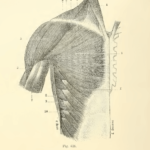Swimmer and osteopathy
Swimmer, you usually feel really comfortable in water. Your body is not subjected to its usual weight but instead to the force of buoyancy. The idea is to use this force to give your muscles a workout with less effort by decreasing the pressure put on the joints and bones.
Slimming
It uses all the muscles and lengthens them without drying the body and creates an impressive energy expenditure.
Improvement of venous return
Muscular contraction/de-contraction favours the pumping of blood from the legs and improves venous return.
Reinforcement of cardio and pulmonary system
Swimming reinforces lung capacity by increasing ventilation and lessening the volume of expiratory reserve.
Muscular reinforcement
Water lessens the pressure put on joints by unloading the muscular work.
Relaxing activity
The production of endorphins, coupled with the analgesic effect of immersion make it one of the most relaxing sporting activities
Develops coordination
Swimming is a technical sport with a motor dissociation and a particular breath rhythm that encourages learning and the improvement of the perception of the body map.
Recurring conditions
Swimmer’s headache and hypoxia

The hypoxic headaches that we will be describing here are common in competitive swimmers and should not be considered as a general rule for other types of headaches.
A headache is a subjective symptom that is defined as local pain that is felt at the level of the skull, sometimes limited to one side, and sometimes over the whole head. It is usually expressed as a burning pain, a stinging or tingling sensation, or as a crushing head pain.
Cervical pain in swimmers

Swimming long distances in the pool, the specialization in one stroke (rotation/ repeated tilting of the head), performance requirements, and a stressful professional life can cause irritation of the cervical joint facets.
And cause the swimmer to consult an osteopath because of cervical pain.
Lower back pain in swimmers

The overuse syndrome generally causes lower back pain in competitive swimmers.
An intense repetition of movement, most often in the butterfly stroke, on the joint and the surrounding area will cause inflammation of the lumbar area, which then quickly leads to lumbago.
Swimmer’s shoulder

Crawl, butterfly and backstroke are the three styles that cause the swimmer to need a consultation. The breaststroke more often leads to knee pain.
Overuse of the shoulders generates micro-injuries, which are expressed as an inflammation of the rotator cuff, at the level of the tendons (tendinitis) or at the level of the joint capsules (capsulitis).
Osteoapthic treatment
A thorough assessment of joints and muscles will be completed to identify the damaged mechanism. Using various myotensive, articular, fascial and cranial techniques, the osteopath will seek to decrease inflammation and return the swimmer’s mobility and self-confidence for the next competitions.
Pain reduction treatment is always possible as a first step; it’s a less expensive solution that can reduce pain in a short period of time. Sadly this solution will do nothing to treat the main cause of the headache.
Osteopathic treatment is then recommended in this case. The practitioner seeks to bring long term relief to the swimmer by using fascial and cranial techniques to return mobility to the bony processes, thus re-vascularizing the sensitive structures.
Osteopathic Treatment Methods
SOFT TISSUE MANIPULATION
Soft tissue manipulation can be used in many different ways. This method is used to evaluate the condition of tissues, ease restrictions, help the body’s fluids (blood, lymph, etc.) flow smoothly and restore function.
Optimal neuro-vascular flow helps to reduce harmful fluid retention and allows the body’s immune system to work more effectively.
Throughout the treatment, Osteopathic Manual Practitioners will continuously check on the state of the body’s tissues. The goal is to gently guide the tissue back to health without over-treating.

CRANIAL OSTEOPATHY
As the gentlest osteopathic technique, Cranial Osteopathy is also one of the most significant.
It is used to assess and treat the mobility of the skull and its contents. It may also be used to assess and treat the spine, sacrum and other parts of the body. The goal of this technique is to adjust the body’s physiology by restoring balance and optimal neuro-vascular flow surrounding the Central Nervous System and all of its autonomic centers.

VISCERAL MANIPULATION
Visceral Manipulation is used to effectively treat organs and viscera of the body, including the lungs, heart, liver, spleen, kidneys, stomach, pancreas, intestines, the bladder and the uterus.
Osteopathic Manual Practitioners will gently move the structures themselves and the fascia that surrounds them to restore full movement.
Applied with gentle pressure, visceral manipulation corrections can improve the mobility of an organ, improve neuro-vascular flow surrounding the organ and ultimately help maximize organ function.

OSTEOPATHIC ARTICULAR TECHNIQUE
The osteopathic articular technique, involving gently moving two joint surfaces, is used to reduce muscle spasms, ease neurological irritations, assist in joint mobility and help reduce pain and discomfort.
It is a less forceful technique than joint manipulation.
Osteopathic Manual Practitioners will carefully prepare the soft tissues around the treatment area, positioning the patient so that there is minimal (if any) force needed to perform the maneuver.







